The First Viper GTS-R
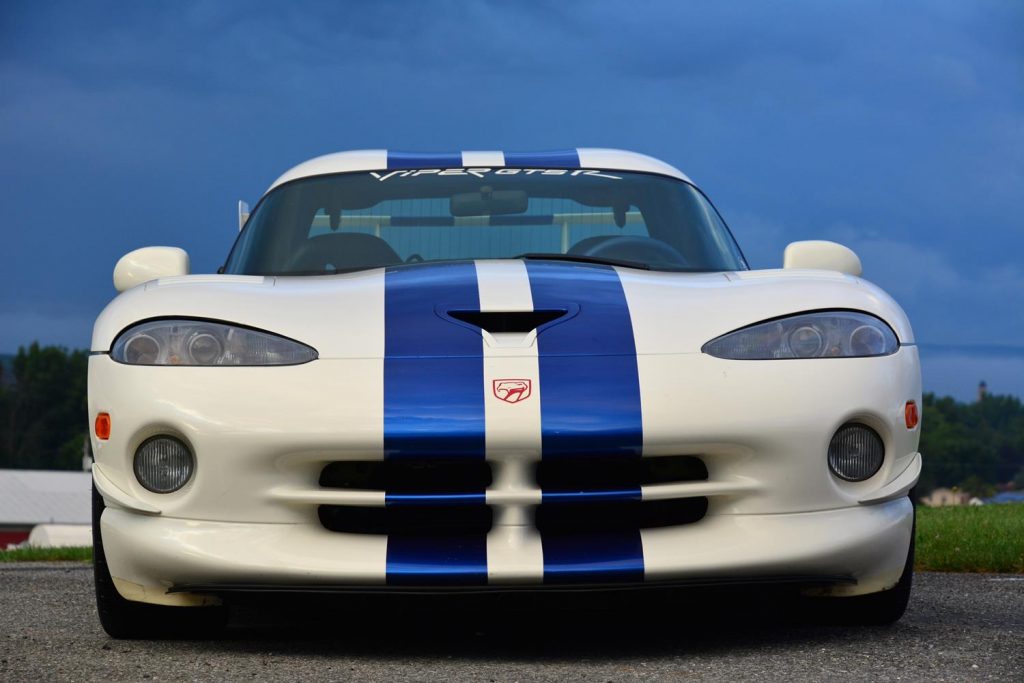
Our incredible story begins with Roger entering his Color Me Gone ’64 Dodge in the Autorama at Cobo Hall in Detroit. Seems some folks from Chrysler are there and notice the car. Sometime later, Ralph gets an invitation to show his car at the premier Meadow Brook Concours d’elegance in 1998 (??) . The show has some Chrysler execs wandering around looking for car for the new Chrysler Historical Museum. They spot Ralph’s CMG Dodge and tell him they would like the car for the Museum. Ralph is flattered, Chrysler wants to borrow his car for a display. “No, you don’t understand,” they say. “We want to buy it.”
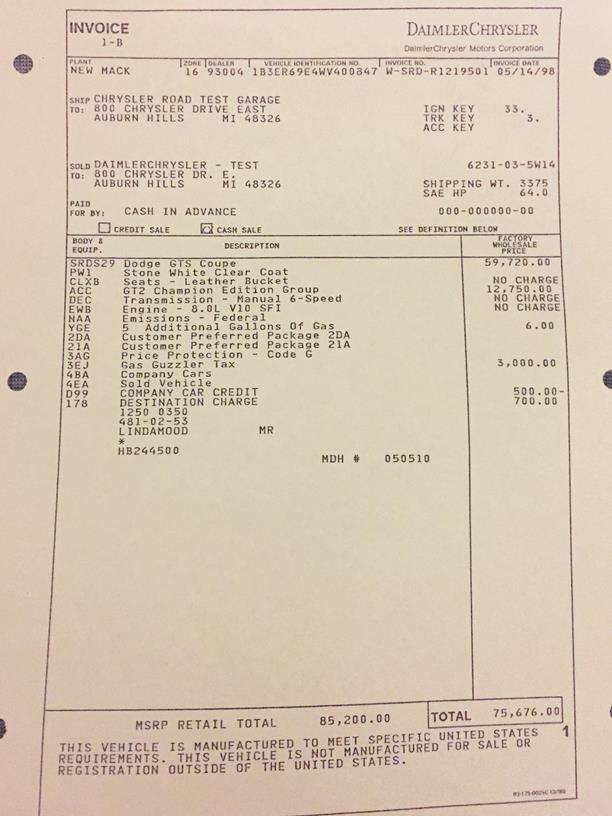
Ralph is hesitant. He doesn’t want to get hit with a capital gains tax on a cash deal, and he is figuring the Dodge as kind of a retirement nest egg. So he asks Chrysler to make an offer. They come back with a brand new 1991 base Viper plus a brand new 3500 dually Ram pickup. Sound like a good deal up front, but Ralph, the sharp cookie that he is, does some figuring. What’s a used 3500 dually pickup gonna be worth in five years? Same for a 5-year old base Viper.
He tells Chrysler they are going to have to do better.
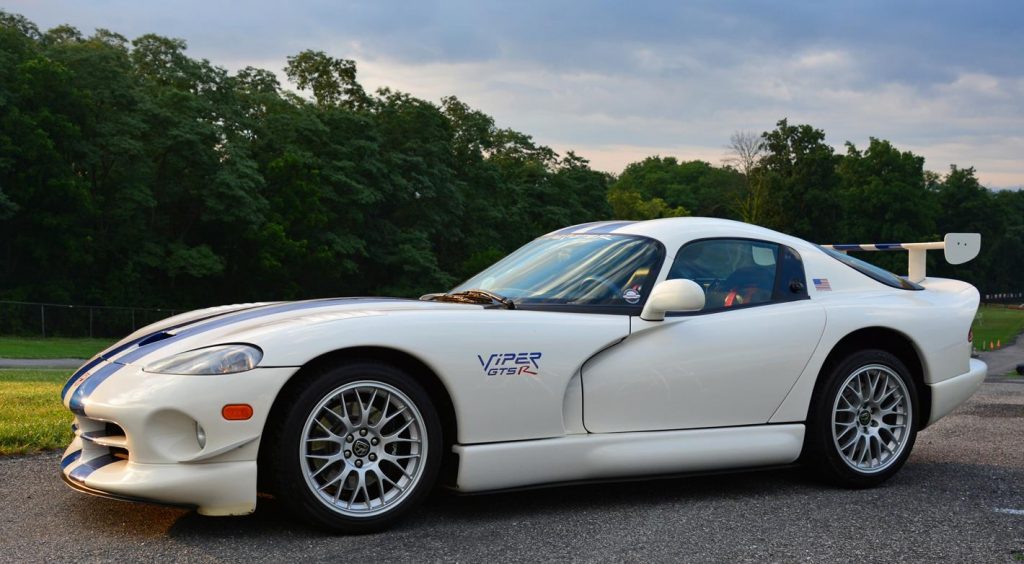
That’s when Ralph gets a call from his son, Dominic. “Hey dad, did you hear about the new Viper GTS-R they’re coming out with? Gonna be a limited production of just 100, and they cost 85 grand.”
Ralph figures, that’s cool, but Chrysler ain’t never gonna go for that kinda deal. Well, one thing leads to another and Chrysler agrees to the deal. It’s too early for a production car, but Chrysler has two GTS-R mules or pilot cars that they use for testing. They’ll give Ralph pilot car No. 1, last three VIN digits 847, as an even swap for the ’64 CMG Dodge, OK? Hey, does Ehrenberg poop in the woods? Ralph has Chrysler sweeten the deal a bit. The tires look new even with the odometer showing 10,000 miles. But Ralph asks for new tires and brakes. “No problem.”
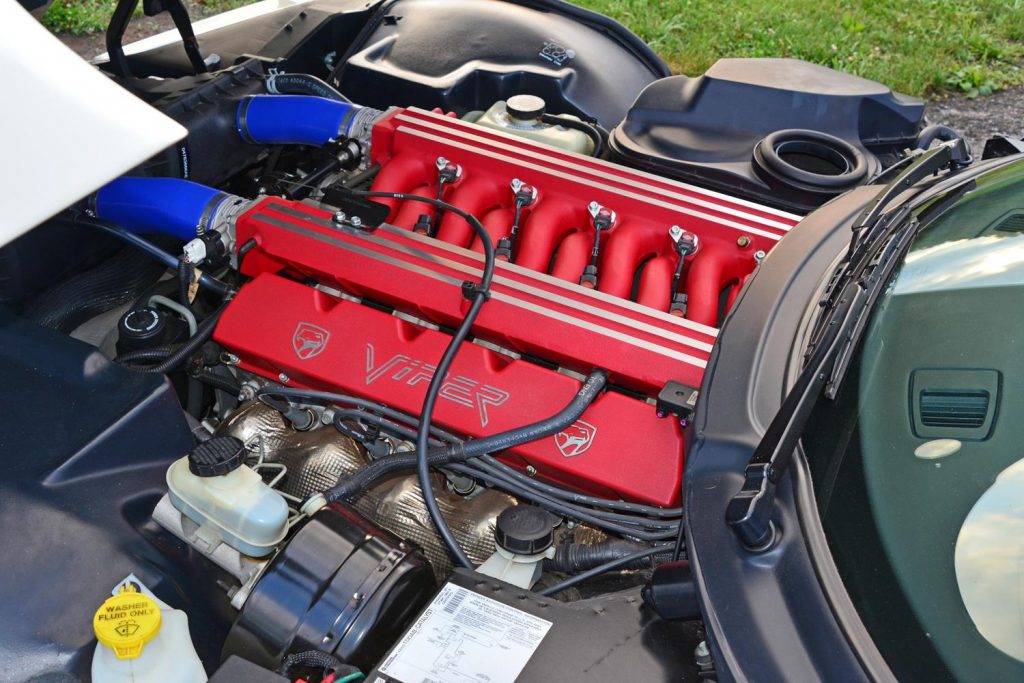
Ralph received Roger’s approval before making the deal because the Color Me Gone dodge represented him, not Ralph who notes that Roger was tickled to death (he died April 20, 2014).
The lawyers draw up the paperwork and nothing in writing is mentioned about the value of either car. Ralph and Chrysler each have to pay $10 transfer fee. Well, at least the payment book is small. An interesting side note, the Chrysler guy who notarizes the papers just happens to be Roger Lindamood’s nephew, last name Lindamood, natch. How cool is that?
Ralph imagines the scenario of one of the Chrysler bean counters working on the even-swap deal The takes out his NADA Used Car Value Guide and looks up the value of a 1964 Dodge, then he looks at the list price of a Viper GTS-R. Then he looks at the NADA Guide again and then at the GTS-R’s price tag. Who’s gonna justify this as an even exchange. So he just shakes his head.
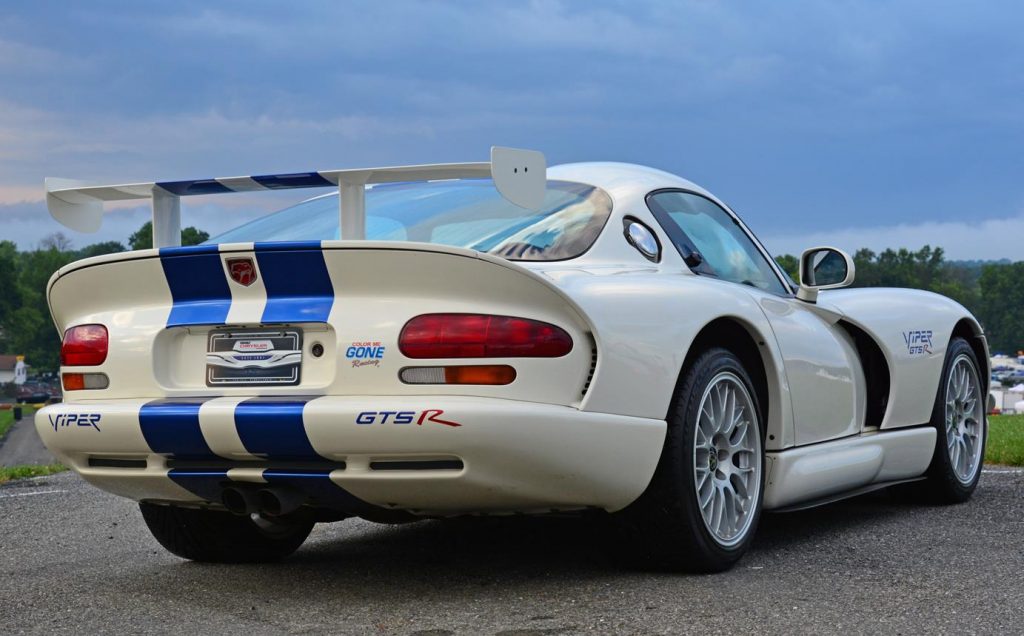
Shortly thereafter, a truck comes by Ralph’s house. It picks up the white and blue CMG Dodge and drops off a white and blue GTS-R with all the fanfare of a UPS guy dropping off a box of mail-order dog food. Ralph ends up staring and this imposing, almost intimidating machine and kinda wonders what to do next.
Ralph not only gets the car, but a 3” binder from Chrysler that shows all the vents No. 847 attended, all the work orders (such as “Rear wing squeaking—replace it”) and repairs done to the car and all the magazine articles it appeared in. Ralph also has the build sheet on both GTS-R pilot cars and numbers 1 and 100 of the production cars.
Ralph had obtained Roger’s approval on the deal because the Color Me Gone Dodge represented him, not Ralph. Roger, according to Ralph, was tickled to death (he died April 20, 2014).
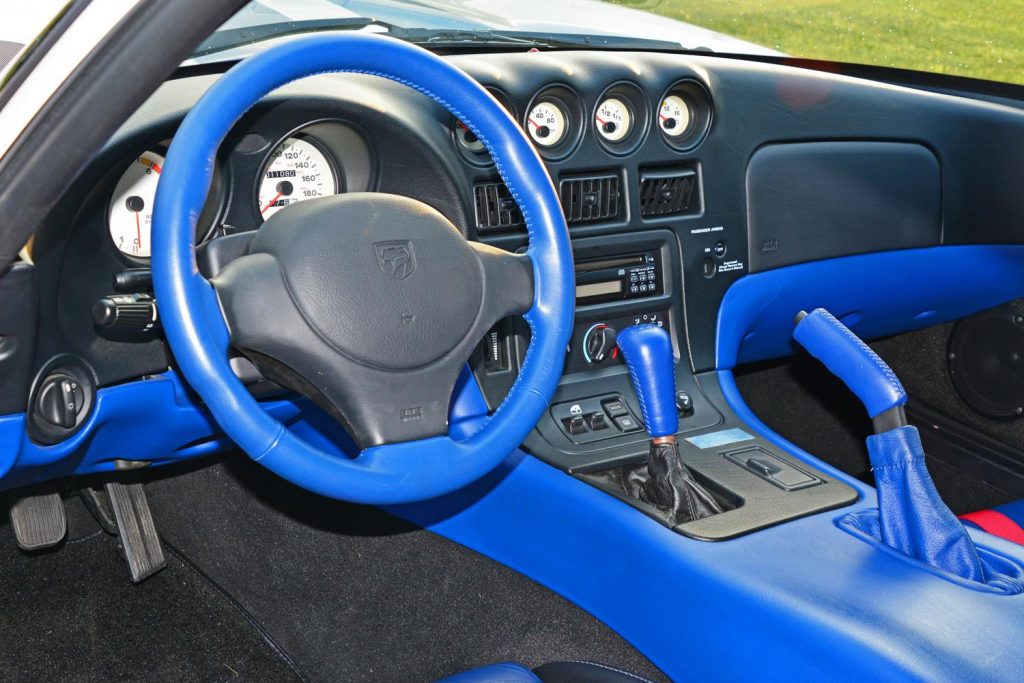
So what’s the difference between the pilot Rs and the production GTS-Rs? The pilots had black steering wheels and shifter knobs. Production had blue. Chrysler has to install the blue wheel and shifter knob in order to be certified prior to the sale, but Chrysler gives Ralph the black items. The seatbelts in No. 847 are real race belts—a heavier fabric than production that are designed to look like race duty. Chrysler sends Ralph a recall for the belts to be changed out for the production restraints, which Ralph promptly ignores.
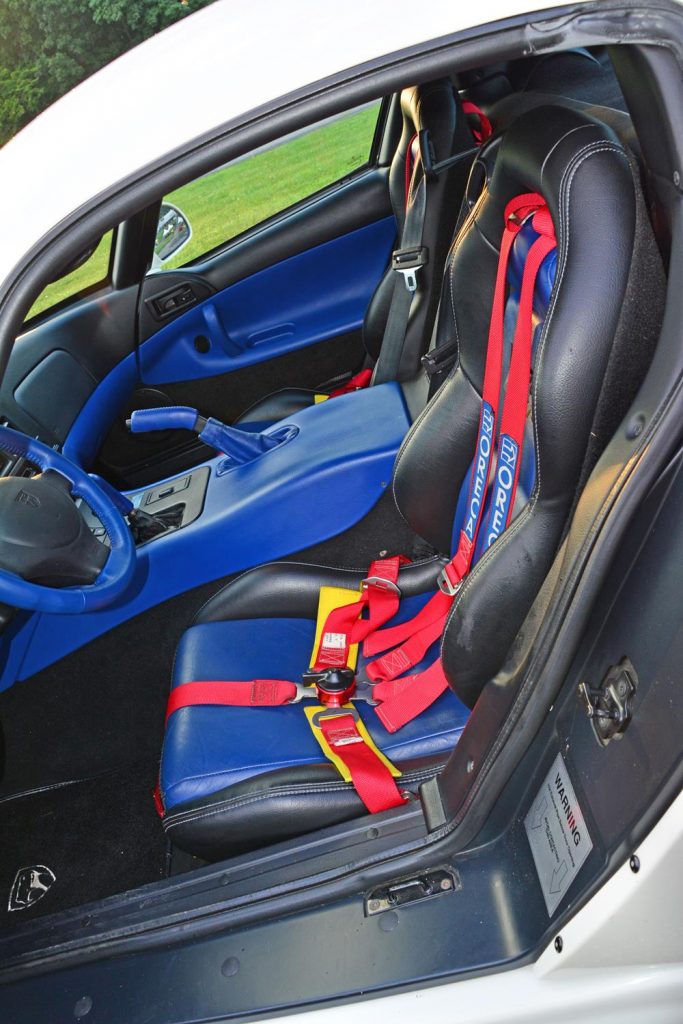
Production cars have a console data plate that shows the production number of the car in the 1-100 sequence. The plate in the mule cars are blank as they were there just to show the execs what the plate will look like in production. It seems Chrysler also experimented with different size American flags and lettering on the left sail panel, before deciding on a small version flag and lettering.
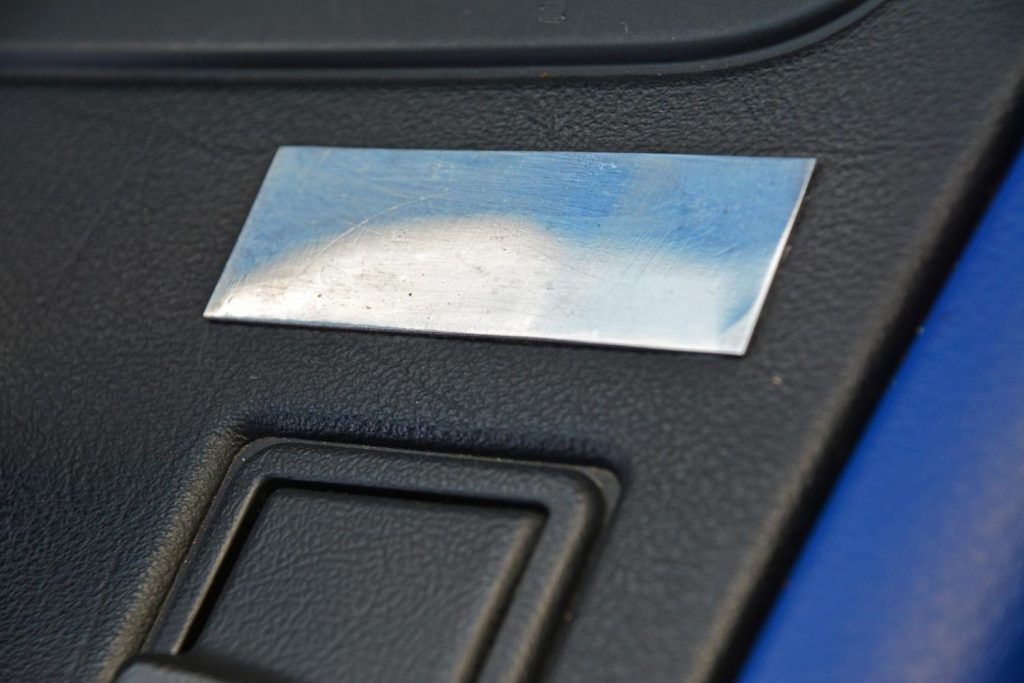
Highlights of the GTS-R package not found on non-R Vipers: The R has a revised airbox that Chrysler says is good for 10-15 additional horsepower. They also have blue intake hoses vs. black. Rs have airfoils front, sides and the big rear wing. Rs had wider BBS wheels with a Viper head center cap. Tires are Michelin Pilot XXX3 front 275/40 ZR18; rear 335/30ZR18.
In March 1999, Viper No. 845 was delivered to Road and Track magazine for a track test shootout with Mario Andretti behind the wheel. Road and Track had assembled a number of top tier sports cars for their June issue, including Acura NSX, Corvette, Ferrari F355 and Porsche. Viper won the skidpad , slalom and time trails, running the quarter-mile @10.56 sec. and hitting 181 mph on the straightaway. Viper was the hands-down overall winner. Even so, didn’t really care for the car too much. Too much like the Cobra, he said. Very raw acceleration, the gas was like an electric switch–on or off. The pedals were offset too far to the left. While Mario commented that the Viper lacked the finesse of the European cars, but he loved the way the car cornered at high speed which he attributed to the Viper’s aerodynamics. Even so, he felt the suspension was a little soft in the corners and he ground down the bottom of the right front spoiler. Ralph didn’t want that repaired because it’s visible in the Road and Track photos. Same deal for a small chip by the headlight. Ralph felt it added to the Viper’s persona.
The Viper also was thrashed for the Car & Driver TV show in February, 1999. A professional driver toured the quarter-mile in the 11-second range.
Today, Viper No. 847 spends most of its time in Ralph’s garage. Ralph says he may not have the time to go near it for three or four years at a time. Then, he may take it out for three Sundays in a row. About six or seven years ago, he was invited by a Viper club for an event at Charlotte Motor Speedway, where the Vipers were allowed on the track. Ralph hit 120 mph on the straight in the tightly regulated event, but he said Lynn cleaned his clock on lap times when she slid in behind the wheel. Most recently, his GTS-R was featured in the Invitational display at the 2017 Chrysler Nats in Carlisle.
Ralph says when he retires he hopes to spend more seat time in his Viper. Summing up his feelings about his GTS-R, Ralph says, “I tell you what, you gotta be around Vipers to be totally amazed by them. There’s just something about them–sitting in them, the look of them–I just get all enthused about the car all over again.”
So what ever happened to the second pilot GTS-R No. 848? According to Ralph’s understanding, the car was taken out by a Chrysler engineer who lost it on the expressway, hit a guard rail and took out the front end. Chrysler repaired it and retired the Viper away from any temptation as a permanent display inside the Museum.

